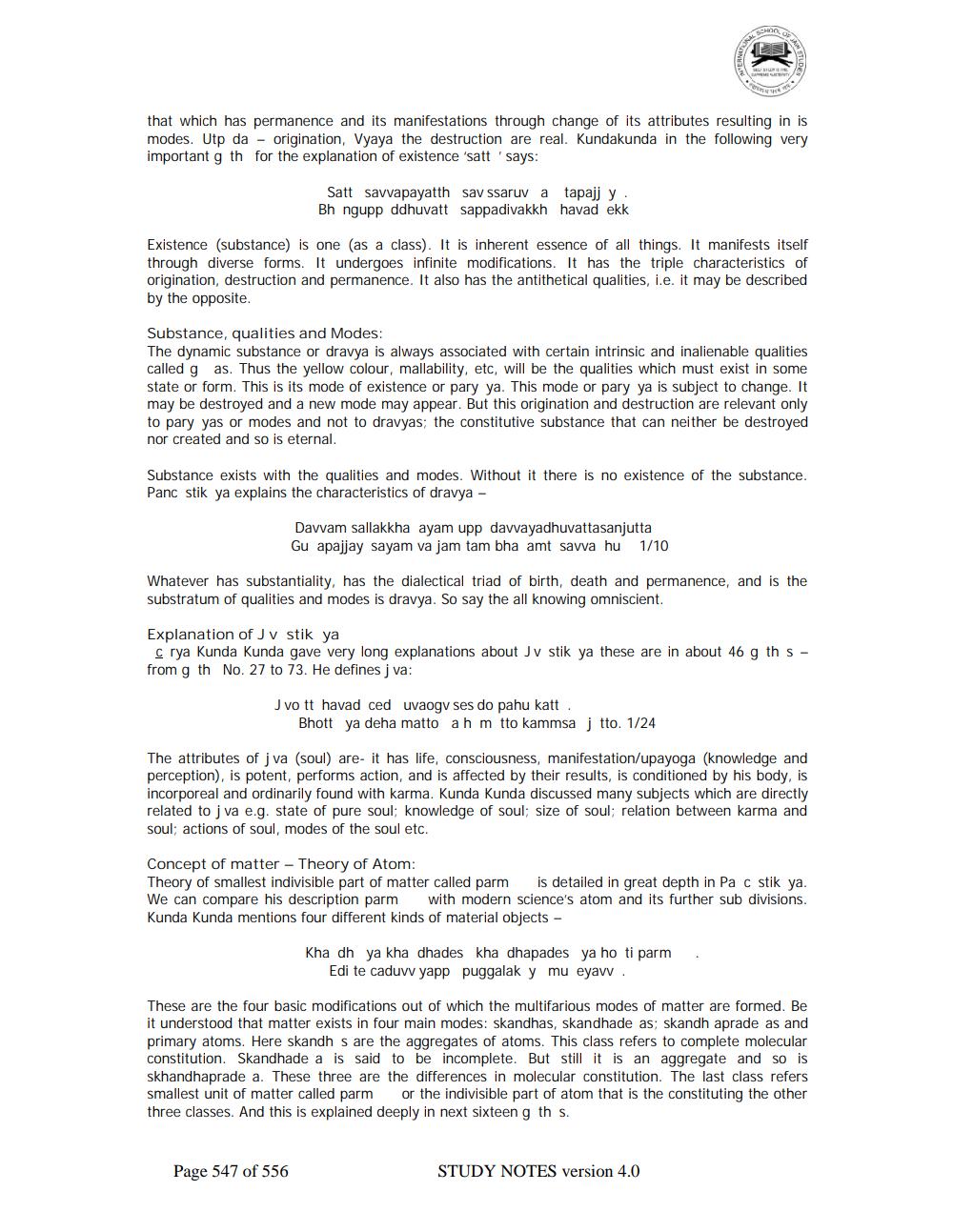________________
that which has permanence and its manifestations through change of its attributes resulting in is modes. Utp da - origination, Vyaya the destruction are real. Kundakunda in the following very important g th for the explanation of existence 'satt 'says:
Satt savvapayatth sav ssaruv a tapajj y. Bh ngupp ddhuvatt sappadivakkh havad ekk
Existence (substance) is one (as a class). It is inherent essence of all things. It manifests itself through diverse forms. It undergoes infinite modifications. It has the triple characteristics of origination, destruction and permanence. It also has the antithetical qualities, i.e. it may be described by the opposite.
Substance, qualities and Modes The dynamic substance or dravya is always associated with certain intrinsic and inalienable qualities called g as. Thus the yellow colour, mallability, etc, will be the qualities which must exist in some state or form. This is its mode of existence or pary ya. This mode or pary ya is subject to change. It may be destroyed and a new mode may appear. But this origination and destruction are relevant only to pary yas or modes and not to dravyas; the constitutive substance that can neither be destroyed nor created and so is eternal.
Substance exists with the qualities and modes. Without it there is no existence of the substance. Panc stik ya explains the characteristics of dravya -
Davvam sallakkha ayam upp davvayadhuvattasanjutta Gu apajjay sayam va jam tam bha amt savva hu 1/10
Whatever has substantiality, has the dialectical triad of birth, death and permanence, and is the substratum of qualities and modes is dravya. So say the all knowing omniscient.
Explanation of J v stik ya
c rya Kunda Kunda gave very long explanations about Jv stik ya these are in about 46 9 th S - from g th No. 27 to 73. He defines j va:
J vott havad ced uvaogv ses do pahu katt
Bhott ya deha matto a hm tto kammsaj tto. 1/24
The attributes of jva (soul) are- it has life, consciousness, manifestation/upayoga (knowledge and perception), is potent, performs action, and is affected by their results, is conditioned by his body, is incorporeal and ordinarily found with karma. Kunda kunda discussed many subjects which are directly related to j va e.g. state of pure soul; knowledge of soul; size of soul; relation between karma and soul; actions of soul, modes of the soul etc.
Concept of matter - Theory of Atom: Theory of smallest indivisible part of matter called parm i s detailed in great depth in Pa c stik ya. We can compare his description parm with modern science's atom and its further sub divisions. Kunda Kunda mentions four different kinds of material objects -
.
Kha dh ya kha dhades kha dhapades ya ho ti parm
Edi te caduw yapp puggalak y mu eyavv.
These are the four basic modifications out of which the multifarious modes of matter are formed. Be it understood that matter exists in four main modes: skandhas, skandhade as; skandh aprade as and primary atoms. Here skandhs are the aggregates of atoms. This class refers to complete molecular constitution. Skandhade a is said to be incomplete. But still it is an aggregate and so is skhandhaprade a. These three are the differences in molecular constitution. The last class refers smallest unit of matter called parm or the indivisible part of atom that is the constituting the other three classes. And this is explained deeply in next sixteen gth s.
Page 547 of 556
STUDY NOTES version 4.0




